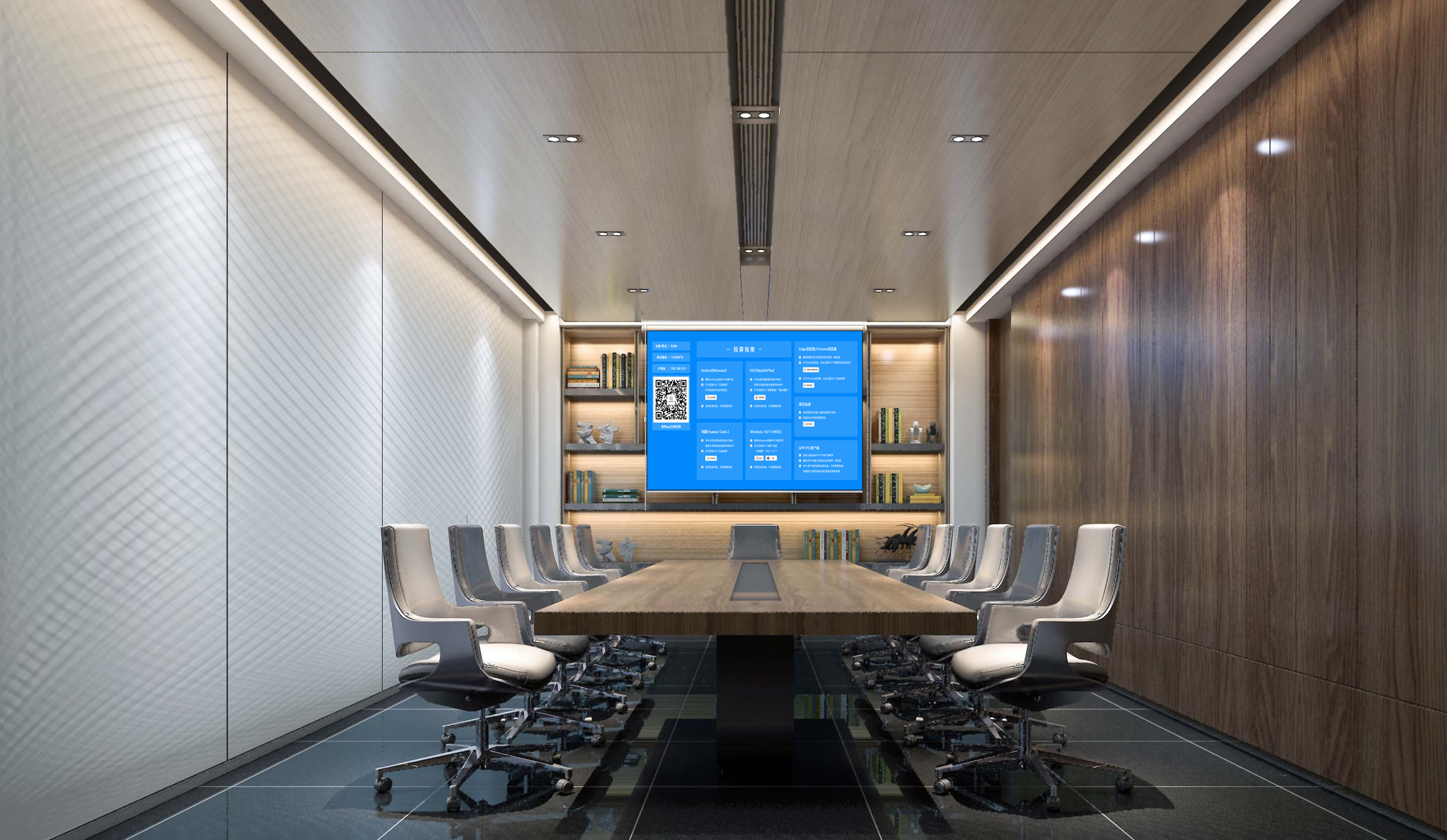Google Cast: Smoother Screen Mirroring for Android Devices
For Android phone and Chromebook users who want to easily use Google Cast for screen mirroring but worry about “connection issues or limited functionality,” this screen mirroring device is deeply compatible with the Google Cast protocol. No extra plug-ins are needed—mirror your phone or computer to a large screen with one click. It works perfectly for home entertainment, office collaboration, and outdoor sharing, aligning seamlessly with the smooth experience of the Google ecosystem.
I. 30-Second Quick Connection: Zero Threshold for Google Ecosystem Users
Fully aligned with the operating logic of Google devices—even beginners can succeed on the first try:
Device Ready to Connect Once Powered On
Plug the screen mirroring receiver into a TV, meeting screen, or projector. After powering on, the large screen automatically displays a dedicated Cast name (e.g., “Living Room Cast Screen,” “Office Chromecast”). No manual pairing is required; the device is automatically added to the Google ecosystem’s waiting list for connection.
One Tap on Native Functions
- Android Phones/Tablets: Open the app you want to mirror (e.g., YouTube, Netflix, Google Photos), tap the “Cast” icon in the top-right corner, and select the large screen name from the device list. The screen synchronizes in 1 second.
- Chromebooks: Click the “Cast” button in the system tray at the bottom-right corner, select the corresponding large screen, and complete the connection in 2 seconds. No ads pop up during the process, and the operation is identical to using native Google devices.
II. Three Core Advantages: Addressing Pain Points for Google Ecosystem Users
1. Compatible with All Google Ecosystem Devices—Even Older Ones
Whether it’s a 3-year-old Samsung Galaxy S21, the latest Pixel 8 Pro, an entry-level Chromebook, or a high-end Android tablet (e.g., Samsung Tab S10+), as long as the device supports the Google Cast protocol (Android 6.0+, Chrome OS 53+), it can mirror smoothly with a compatibility rate of over 98%.
Older Android phones used by elderly family members or Chromebooks for office use don’t need upgrades—just plug in the mirroring device to use Cast, no need to abandon the function due to device models.
2. HD Stable Transmission + Multi-Tasking: Uncompromised Experience
- Professional Image & Sound Quality: Supports 1080P full HD mirroring; when paired with high-performance Android devices (e.g., phones with Snapdragon 8 Gen3), it can output 4K HDR. When mirroring YouTube 4K videos or RAW photos from Google Photos, details (such as textures in videos and color layers in photos) are clear. Paired with Cast-supported speakers (e.g., Google Home Max), it also enables audio-visual synchronization for a immersive home theater experience.
- Stable Anti-Interference Transmission: Dual-band (2.4GHz+5.8GHz) signal transmission ensures no lag even when Chromecast and Google smart home devices are connected simultaneously at home. Short videos and TV shows play with synchronized audio and video, with latency as low as 18ms—even light Android games (e.g., Genshin Impact Lite Mode) respond smoothly.
- Uninterrupted Multi-Tasking: After casting videos from an Android phone via Cast, you can turn off the screen to save power or switch to the background to use WeChat or social apps without affecting content on the large screen. When Chromebooks mirror, you can continue editing documents or browsing the web—doubling multi-tasking efficiency.
3. Google Ecosystem Integration: More User-Friendly Functions
- Seamless Cross-App Switching: When mirroring YouTube videos from an Android phone via Cast, you can switch to Google Photos to mirror photos midway—the large screen will 衔接 automatically without re-disconnecting. When Chromebooks mirror documents, you can directly access files in Google Drive for supplementary mirroring, no local transmission required.
- Convenient Voice Control: Integrates with Google Assistant. Just say to your Android phone or Google Home speaker, “Hey Google, cast my phone to the living room screen” or “Hey Google, pause the video on the large screen”—control mirroring hands-free, aligning with the smart interaction habits of the Google ecosystem.
- Reliable Privacy Protection: When Chromebooks mirror, computer notifications won’t sync to the large screen, preventing work message leaks. After disconnecting Cast, the large screen automatically clears mirroring records to protect user privacy—ideal for office scenarios.

III. Four High-Frequency Scenarios: Enhanced Mirroring Experience
1. Home Entertainment: Immersive Large-Screen Enjoyment
On weekends, cast Netflix shows from your Android phone to the TV via Cast—lounging on the sofa is far more comfortable than watching on a small phone screen. You can even use Google Assistant to adjust playback progress or switch episodes with your voice.
When the whole family views travel photos, cast RAW photos from Google Photos to the TV via Cast—details are clear and colors are true-to-life. Pair with Google Home speakers to play background music for a warmer family sharing atmosphere.
For children taking online courses on Android tablets, cast to the TV’s large screen to protect their eyesight. Parents can remotely control course pauses or replays via their phones, and explain key content in time—with no ad interruptions.
2. Office Collaboration: Efficient & Professional
Business professionals with Chromebooks can cast Google Docs or Slides to the meeting screen via Cast with one click, no cables needed. Use the mirroring device’s “laser pointer” function to highlight key data (e.g., “Q3 revenue up 25%”)—clients can see and understand clearly, and the presentation rhythm won’t be disrupted by devices.
Designers using Android tablets (e.g., Samsung Tab S9 Ultra) to draw can cast their work to the large screen via Cast for team discussions. Real-time revisions are visible, and brush strokes and color matching are clear on the large screen—communication efficiency is 6 times faster than file sharing.
3. Outdoor Sharing: Works Even in Temporary Scenarios
When camping, connect your Android phone to the mirroring device’s hotspot and cast local videos or photos to a portable projector via Cast—no need for outdoor WiFi. Friends can gather around to watch, creating a lively interactive atmosphere.
When showcasing products at outdoor markets, cast product introduction videos from a Chromebook to a portable large screen via Cast. Passersby can understand the product intuitively—no need to hold the device for explanations, enhancing professionalism.
4. Educational Learning: Maximizing Resource Utilization
Teachers can access courseware from Google Classroom on Android tablets and cast it to the classroom’s large screen via Cast. They can annotate key points in real time (e.g., “This formula needs to be memorized”)—students can see clearly and understand quickly.
After students complete assignments on Chromebooks, they can cast to the large screen for peer reviews. When encountering difficulties, they can directly access reference materials from Google Search for supplementary mirroring—boosting group learning efficiency.
IV. Answers to Common User Questions
Can I use Cast mirroring without WiFi?
Yes! The mirroring device supports hotspot mode. Android phones or Chromebooks can connect to the device’s hotspot for mirroring—no external WiFi needed. It works in outdoor or temporary venues, such as camping sites or pop-up exhibitions.
Can non-Google stock Android devices be used?
Yes! As long as the device runs Android 6.0 or above and supports the Google Cast protocol (e.g., mainstream models from Samsung, Xiaomi, OPPO), it can mirror normally—no need to flash the Google stock system.
Can old non-smart TVs be used?
Any TV with an HDMI port works. Plug in the mirroring receiver, and ordinary TVs instantly become smart screens supporting Google Cast. Old devices can be upgraded—no need to replace the TV to enjoy Google ecosystem mirroring.
V. Two Practical Details: More Worry-Free Use
Portable & Easy to Carry
The mirroring receiver is palm-sized and weighs less than 40g. Tuck it into your backpack for business trips or outdoor activities—plug it in and use it immediately in clients’ offices or camping sites, no heavy adapters needed.
Long-Term Compatibility: No Obsolescence
When the Google system or Cast protocol is updated, the mirroring device synchronizes compatibility optimizations (e.g., supporting new HDR formats or Google Assistant commands). No frequent device replacements are required—more cost-effective for long-term use.
For Google ecosystem users, a good mirroring device should be “easy to use, no adjustments needed, and seamlessly integrated with the ecosystem.” This device fully aligns with the usage habits of the Google ecosystem. Whether for daily entertainment, office work, or learning, it makes Google Cast mirroring smoother and more stable—truly unlocking the mirroring potential of Android devices and Chromebooks.
